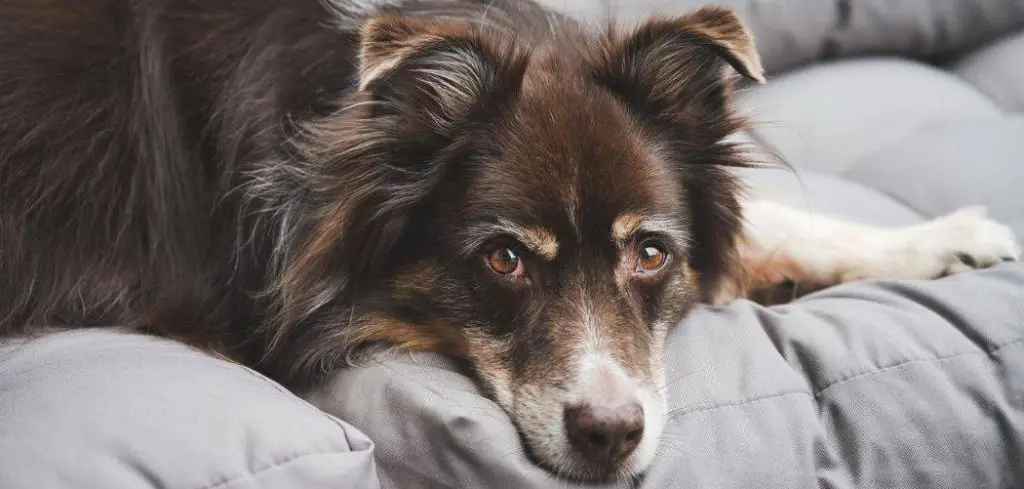When your dog starts drooling more than usual and constantly licking their paws, it’s not just a messy habit — it could be a sign of something deeper going on.
We outline the common reasons for a dog drooling and licking its paws, what you can do at home, and when to seek veterinary help.
Dog Drooling and Licking Paws — Why It Happens
Excessive drooling paired with paw licking by a dog is often a reaction to pain, irritation, or stress. Common causes include allergies, dental disease, nausea, and even anxiety.
Sometimes, a foreign object like a burr or thorn can get lodged in your dog’s paw, triggering licking and causing them to salivate more due to stress.
In other cases, something more internal — like an upset stomach or a toxic exposure — might be to blame. This combination of behaviors is your dog’s way of signaling that something is wrong.

Dog Drooling and Licking Paws: Common Causes
Allergies
Allergies — environmental or food-related — are a common reason dogs lick their paws excessively.
The itching and irritation from allergens like pollen, dust mites, mold, or certain food proteins often lead to repetitive licking. This can trigger drooling as the licking stimulates saliva production.
You might also notice red, inflamed paws, scratching at ears, or watery eyes.
Seasonal allergies tend to flare during spring and fall, while food allergies can be constant.
Allergy-related licking and drooling are uncomfortable for your dog and, over time, can lead to secondary infections.
Read more: Dog Drooling and Not Eating (Is it something serious?)
Dental Disease
Oral pain from periodontal disease, gingivitis, or infected teeth can lead to drooling.
Dogs experiencing dental pain might lick their paws or legs to self-soothe.
You might see blood on toys, paw licking after meals, or a reluctance to chew kibble.
A foul odor from the mouth is another red flag.
Left untreated, dental disease can progress to tooth loss and even affect organs like the heart and kidneys.
Nausea or GI Upset
Nausea in dogs doesn’t always result in vomiting — sometimes it shows up as drooling and restlessness.
Licking their paws or surfaces can be a compulsive response to feeling sick.
This is commonly seen with conditions like gastritis, pancreatitis, dietary indiscretion, or toxin ingestion.
You might also notice lip smacking, lack of appetite, or attempts to eat grass.
Ingesting something toxic can also cause sudden drooling and paw licking as the dog becomes distressed.
Foreign Object or Paw Injury
If something is stuck in your dog’s paw — like a splinter, burr, or glass shard — they’ll often lick excessively to try to dislodge it.
This can lead to inflamed or bleeding paw pads and increased drooling from pain and stress.
Check between the toes and pads for anything embedded or abnormal.
Left untreated, minor injuries can become infected and more painful.
Drooling in this case is often stress-related or due to discomfort.
Anxiety or Stress
Dogs experiencing anxiety may drool and engage in repetitive behaviors like paw licking.
Triggers include separation, loud noises, changes in routine, or unfamiliar environments.
This behavior is similar to nail-biting in humans — a self-soothing mechanism.
Anxious dogs may also pace, whine, pant, or hide.
Chronic stress can lead to skin damage from over-licking and increase the risk of secondary infections.
Exposure to Toxins or Irritants
If your dog has come into contact with a chemical irritant — like floor cleaner, lawn treatments, or deicing salt — they may start licking their paws and drooling.
These substances can cause burns or irritation, especially if ingested during grooming.
Symptoms may appear suddenly and include vomiting, paw redness, or mouth foaming.
Prompt decontamination is critical, as some exposures can become emergencies.
What to Do If Your Dog Is Drooling and Licking Its Paws
Start by examining your dog’s paws in good lighting.
Check between the toes and paw pads for any signs of cuts, swelling, redness, or lodged debris. Use gloves or wash your hands before and after inspecting.
If you suspect environmental irritants, gently rinse the paws with lukewarm water and mild pet-safe soap.
Keep your dog from further licking by using an Elizabethan collar or a soft recovery cone.
If allergies are likely, consult your vet about antihistamines or dietary adjustments.
For suspected anxiety, maintain a calm environment and consider safe calming aids like pheromone diffusers or anxiety wraps.
Dental pain or ongoing drooling with nausea warrants a veterinary exam to rule out infections, GI issues, or toxin ingestion.
When to Call or Visit Your Vet
Contact your vet promptly if you notice any of the following:
Sudden or severe drooling, especially with vomiting or lethargy.
Swollen, bleeding, or painful paws that don’t improve within 24 hours.
Blood, pus, or foul odor from the mouth or paw.
Signs of toxin exposure like foaming at the mouth, seizures, or muscle tremors.
Your dog becomes uninterested in food, water, or play.
These may signal serious health issues requiring immediate veterinary care.
Read more: Dog Drooling Excessively at Night (What it means)
Key Takeaway
When your dog is drooling and licking their paws, it’s not just a harmless quirk — it could be a cry for help.
From allergies and anxiety to injuries or internal illness, there are many reasons for these behaviors.
Check your dog’s paws carefully, manage their comfort at home, and don’t hesitate to involve your vet when the symptoms persist or escalate.
Early intervention can make all the difference in easing your dog’s discomfort and preventing more serious complications.
